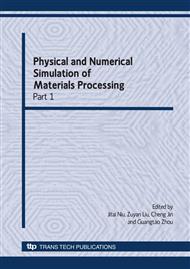p.924
p.930
p.935
p.941
p.947
p.953
p.959
p.972
p.978
High Temperature Mechanical Behavior of 16Mnq under Constant Constraint Conditions
Abstract:
Welding is a main processing way in the manufacture of steel bridges. Welding deformation is one of the main influencing factors on the quality of steel bridges, which relates to the effect of material mechanical behavior and welding techniques. The welding distortion is considered to be a result from the inherent strain after welding, which dependent on the highest temperature reached and the constraint at each point. 16Mnq is a common structural steel used in railway steel bridges. Thus, the paper addresses the high-temperature mechanical behavior of 16Mnq through a series of experiments under various peak temperatures and constant constraint conditions. Relationships between temperature, constraint and strain at high temperatures were discussed. The yielding phenomenon based on high temperature occurs under a certain condition of both constraint and temperature, and this phenomenon had significant influence on the inherent strain. The results are significant to understand thermal-mechanical behavior of material and to predict the inherent strain under constant constraint conditions during heat circulates of welding.
Info:
Periodical:
Pages:
947-952
Citation:
Online since:
April 2008
Keywords:
Price:
Сopyright:
© 2008 Trans Tech Publications Ltd. All Rights Reserved
Share:
Citation:


